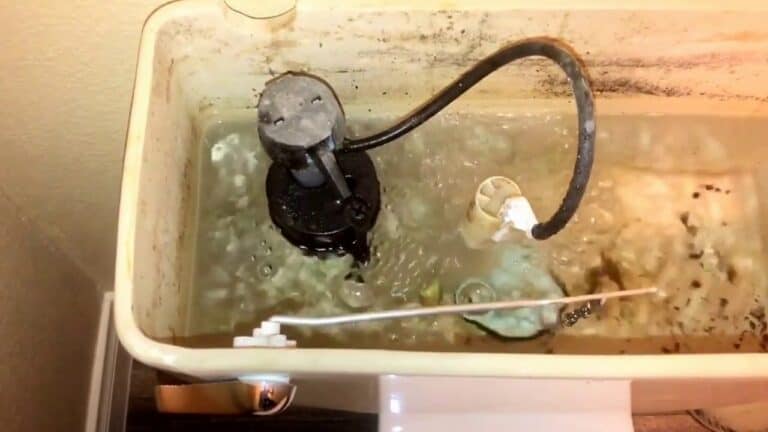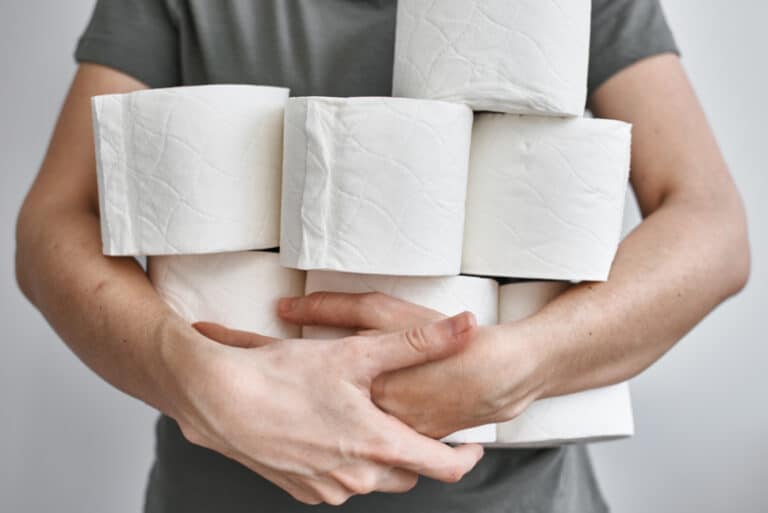What to Do if Your Toilet Water Supply Valve is Leaking

So if you’re a homeowner with a leaky toilet, you’re probably simultaneously working on it with a wrench in one hand and a home repair book – or your phone – in the other, watching a YouTube video and praying you can fix it before it does too much damage to your floor.
But really, a leaking water supply valve should have a relatively simple fix. Fixing the water supply valve in most cases is a matter of understanding the principles of the valve to begin with.
The construction of the toilet supply valve
The supply valve in the toilet is a simple, durable piece of basic engineering. It hasn’t changed in any significant way since the 1800s and is in principle the same as the valve that controls the faucet that feeds a garden hose. With this simplicity, it shouldn’t be surprising that problems with these devices are both relatively rare, and quite easy to correct.
A water supply valve for the toilet – or for a sink, since these are the same type of valve and they are often drawing off of the same wall pipe – is a simple shut-off valve that hasn’t changed in a long time. This makes them simple, durable, and easy to repair. If one starts leaking, it should be just a matter of minutes or even seconds to repair them.
Types of Shutoff Valves
There are many types of valve that are in use, but the most common kind is the angled fixture shutoff valve. This is a small, silver valve that usually uses an oval handle to control the flow of water. The shutoff valve is expensive and durable, and each individual fixture should have its own valve to control water flow only to it.
The fixture valve might use a compression stem. A compression stem type valve will be distinguishable by feeling a squeeze when you close the valve, but the more common is the ball valve, which uses a spherical ball with a hole through it. The ball valve will close completely with just a quarter-turn, which makes it very secure and easy to use.
A relative to the angled fixture shutoff valve is, without much surprise, the straight fixture shutoff valve. Unlike the angled shutoff valve, which is used when the pipe needs to be linked to the fixture by a short length of reinforced hose, the straight shutoff valve is typically used where the water can flow straight to the fixture.
Most frequently, the straight shutoff valve is used in a situation where the feedwater pipe comes out of the floor. This is more common in an industrial or institutional setting; in most residential settings (but not all), the feedwater pipes run in the walls and only have very limited run in floors, if they run in the floor at all.
The internal stem of a straight fixture shutoff valve will be of the same types as the angled fixture shutoff valve, and both will probably be a ball valve internally.
Basic repair
The most common reason for a cutoff valve to begin leaking is because the valve’s packing nut has come loose, allowing the sealing material to slide out of position under water pressure. In this case, the water in the pipe will begin leaking around the seal and onto the floor.
This is an annoying problem, but it’s not the end of the world. In these cases, fixing a toilet supply valve is as easy as turning off the water upstream of the toilet supply valve before tightening the packing nut.
PRO TIP: The professionals wrap their wrenches’ gripping teeth with masking tape to avoid scratching and scarring the finish on plumbing, and so should you. A little caution takes a moment, but damage to your house’s fixtures is forever.
Once the valve is tightened, it’s usually a simple matter to turn the water on again and see if it leaks. If it stops leaking at that point, everything has been fixed to begin with.
What happens if the valve starts dripping again?
Almost all the time, the above procedure will stop the valve from leaking. Most leaks have simple causes and simple solutions, which can be handled with a few basic tools and the resources of an average homeowner.
The most likely situation is that the valve stem has become unseated and can’t fully seal the line, allowing water pressure to push out of the fixture. If this is the case, you will need to start the new repair procedure by shutting off your house’s water main to isolate the leaky fixture. Before doing this, make sure that you have potable water stored in your refrigerator for an afternoon.
Disconnect the toilet supply line from the toilet supply valve, and then remove the valve from the water supply line in the wall. Have a bucket handy to catch any water that hasn’t drained from the line before continuing. When the shutoff valve has been removed from the supply line, lay it out on a work surface.
First, take the valve apart
There will usually be a handful of pieces under the handle: the packing nut and the threaded valve stem, along with two to three neoprene rings that are the sealing components of the valve system. The neoprene rings are supposed to be sealing the valve stem to the water supply and keeping the water from pushing past the outer neoprene ring and filling the bathroom.
The cause of leakage
The likely cause of the leakage is damage to or distortion of one or both neoprene rings. If the rings are distorted, flex them to make the rings supple again. They are likely compressed to their utmost limit by the water pressure and thus somewhat hardened by wear. Once they are supple again, the entire system should be cleaned with a lint-free microfiber cloth and reassembled.
If rings are damaged
If the rings are damaged, you will need to go to a hardware store to get new neoprene rings. Take the valve stem with you to make sure that you can get the old neoprene rings correctly matched to the right new neoprene rings and avoid annoying return trips.
Put the valve back together
Once you have the replacement rings, or have reconditioned your existing rings, put the valve back together in the way that it was taken apart, and re-tighten the packing nut so that the entire valve stem is back within the valve. Reconnect the stem to the wall supply and toilet supply lines and turn on the main water supply. If the repair worked, the toilet shutoff valve should no longer leak, and it should be ready for more years of trouble-free service.
If the repair did not work, and you have gotten to the point of replacing the neoprene rings with new ones, if at this point your shutoff valve is still leaking, then it’s time to call a professional plumber and have the valve replaced. At this point, you have done all you can do.
Conclusion
Like most home repairs, repairs to home plumbing are simpler than they look. A plumbing repair is just a matter of having the right tools and the right pieces. There are some failures with home plumbing that are beyond the homeowner’s ability to fix. However, with a little elbow grease and some help from the hardware store, most home repairs are perfectly within the capacity of the home owner.
You can also read:






